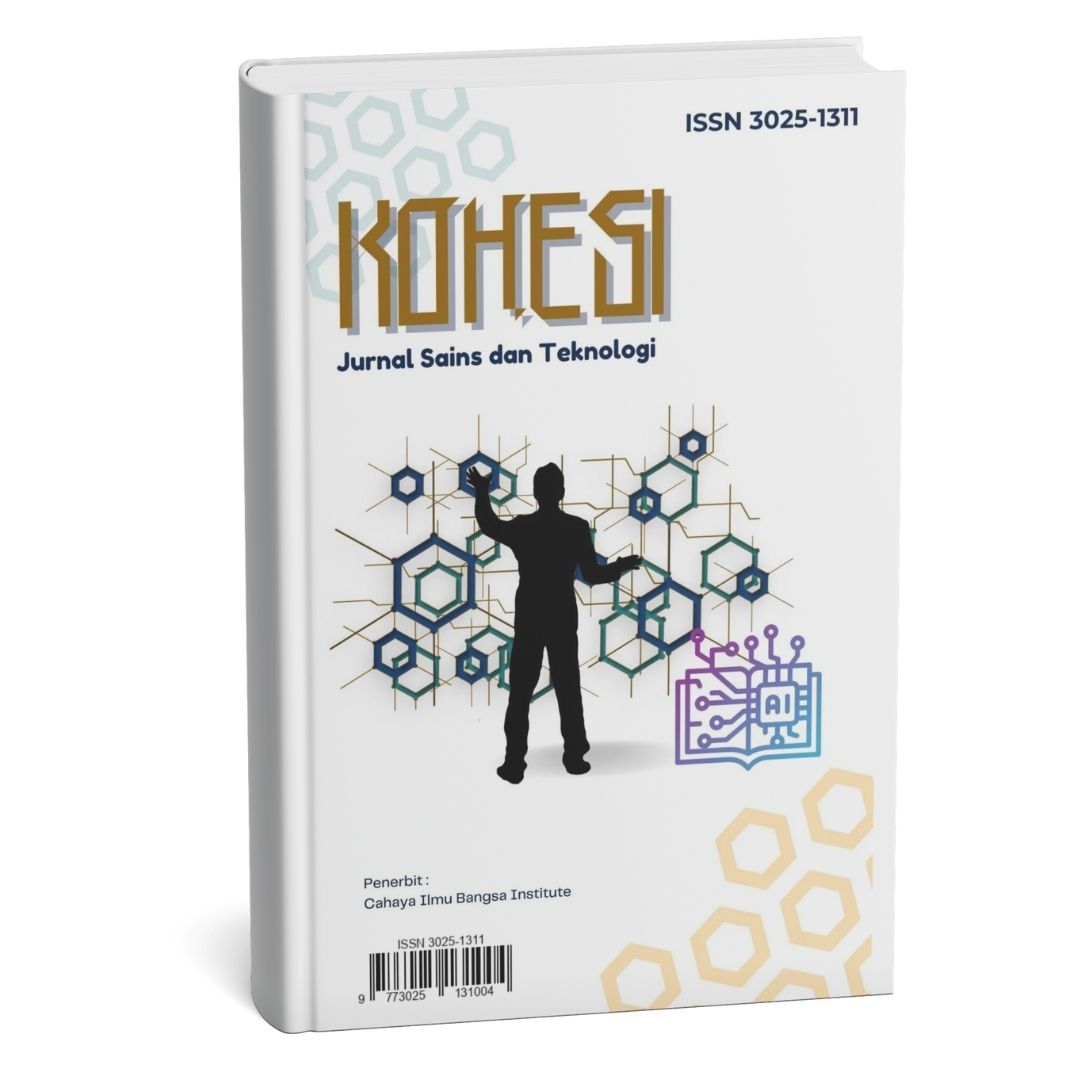IMPLEMENTASI METODE PENELITIAN EKSPERIMEN DALAM PENGUJIAN PERFORMA APLIKASI MOBILE
Main Article Content
Abstract
Perkembangan pesat aplikasi mobile telah mengubah cara masyarakat berkomunikasi, belajar, bekerja, dan mengakses layanan digital di berbagai sektor. Seiring dengan meningkatnya kompleksitas fitur dan ketergantungan terhadap perangkat mobile, aspek performa aplikasi menjadi penting dalam menjamin pengalaman pengguna yang optimal. Aplikasi dengan performa rendah seperti waktu muat lambat, konsumsi baterai tinggi, atau sering crash cenderung ditinggalkan pengguna, sehingga menghambat keberhasilan adopsi teknologi. Penelitian ini bertujuan untuk mengimplementasikan metode penelitian eksperimen secara sistematis dalam pengujian performa aplikasi mobile, guna menghasilkan kerangka kerja evaluasi yang tidak hanya valid secara ilmiah, tetapi juga aplikatif dalam dunia pengembangan perangkat lunak. Metode yang digunakan adalah pendekatan eksperimen kuantitatif yang diperkuat dengan literature review terhadap 10 artikel ilmiah terbitan tahun 2021–2025 dari jurnal bereputasi. Variabel yang diuji mencakup loading time, konsumsi RAM, daya baterai, dan tingkat crash, dengan alat bantu seperti Firebase Performance Monitoring, JMeter, dan Android Profiler. Hasil studi menunjukkan bahwa metode eksperimen mampu memberikan data performa yang akurat dan replikatif, serta meningkatkan efisiensi dan cakupan pengujian hingga 30–50% lebih baik dibanding pendekatan manual atau trial-and-error. Temuan ini juga didukung oleh studi literatur yang mengonfirmasi efektivitas metode eksperimen dalam mengevaluasi teknologi berbasis AI, AR, dan mHealth.
Article Details
Section
This work is licensed under a Creative Commons Attribution-NonCommercial 4.0 International License.
How to Cite
References
Al-Momani, M. M., & Hasan, M. Y. (2022). Evaluating the students’ attitude toward the use of Moodle mobile application at Zarqa University in the COVID-19 pandemic. In The Implementation of Smart Technologies for Business Success and Sustainability: During COVID-19 Crises in Developing Countries (pp. 607–616). Springer.
Al-Worafi, Y. M., Hermansyah, A., Tan, C. S., Choo, C.-Y., Bouyahya, A., Paneerselvam, G. S., Liew, K. Bin, Goh, K. W., & Ming, L. C. (2023). Applications, benefits, and risks of ChatGPT in medical and health sciences research: An experimental study. Progress in Microbes & Molecular Biology, 6(1).
Chakravarthy, C. K., & Sunitha, V. (2023). THE USE OF MOBILE APPS TO ENHANCE READING SKILLS OF LANGUAGE LEARNERS: A REVIEW. Human Research in Rehabilitation, 13(1).
Chen, Q., Yan, Z., Moeyaert, M., & Bangert-Drowns, R. (2025). Mobile multitasking in learning: A meta-analysis of effects of mobilephone distraction on young adults’ immediate recall. Computers In Human Behavior, 162, 108432.
Fithriani, R. (2021). The utilization of mobile-assisted gamification for vocabulary learning: Its efficacy and perceived benefits. Computer-Assisted Language Learning Electronic Journal, 22(3), 146–163.
Gupta, H., & Saxena, S. (2024). Building Scalable A/B Testing Infrastructure for High-Traffic Applications: Best Practices. International Journal of Multidisciplinary Innovation and Research Methodology, ISSN, 2068–2960.
Han, J.-W., Park, J., & Lee, H. (2022). Analysis of the effect of an artificial intelligence chatbot educational program on non-face-to-face classes: a quasi-experimental study. BMC Medical Education, 22(1), 830.
Hunko, I. (2025). Optimize mobile app testing using machine learning to improve user experience. Asian Journal of Research in Computer Science, 18(5), 403–418.
Jalaluddin, I., Darmi, R., & Ismail, L. (2021). Application of mobile augmented visual reality (MAVR) for vocabulary learning in the ESL classroom. Asian Journal of University Education (AJUE), 17(3), 162–173.
Kruachottikul, P., Cooharojananone, N., Phanomchoeng, G., & Kovitanggoon, K. (2021). Development of a user-centric bridge visual defect quality control assisted mobile application: a case of thailand’s department of highways. Applied Sciences, 11(20), 9555.
Mubeen, M., Iqbal, M. W., Junaid, M., Sajjad, M. H., Naqvi, M. R., Khan, B. A., Saeed, M. M., & Tahir, M. U. (2021). Usability evaluation of pandemic health care mobile applications. IOP Conference Series: Earth and Environmental Science, 704(1), 12041.
Nicolaidou, I., Pissas, P., & Boglou, D. (2023). Comparing immersive virtual reality to mobile applications in foreign language learning in higher education: A quasi-experiment. Interactive Learning Environments, 31(4), 2001–2015.
Ramu, V. B. (2023). Performance Testing and Optimization Strategies for Mobile Applications. International Journal of Performance Testing and Optimization, 13(2), 1–6.
Sahin, V. H., Oztel, I., & Yolcu Oztel, G. (2022). Human monkeypox classification from skin lesion images with deep pre-trained network using mobile application. Journal of Medical Systems, 46(11), 79.
Shen, Y., Wang, S., Shen, Y., Tan, S., Dong, Y., Qin, W., & Zhuang, Y. (2024). Evaluating the Usability of MHealth Apps: An evaluation model based on task analysis methods and eye movement data. Healthcare, 12(13), 1310.
Stocchi, L., Pourazad, N., Michaelidou, N., Tanusondjaja, A., & Harrigan, P. (2022). Marketing research on Mobile apps: past, present and future. Journal of the Academy of Marketing Science, 50(2), 195–225.
Tong, D. H., Uyen, B. P., & Ngan, L. K. (2022). The effectiveness of blended learning on students’ academic achievement, self-study skills and learning attitudes: A quasi-experiment study in teaching the conventions for coordinates in the plane. Heliyon, 8(12).
Wan, Y., Sun, J., Peers, C., Humphreys, J., Kanoulas, D., & Zhou, C. (2023). Performance and usability evaluation scheme for mobile manipulator teleoperation. IEEE Transactions on Human-Machine Systems, 53(5), 844–854.
Yavuz, M., Çorbacıoğlu, E., Başoğlu, A. N., Daim, T. U., & Shaygan, A. (2021). Augmented reality technology adoption: Case of a mobile application in Turkey. Technology in Society, 66, 101598.

